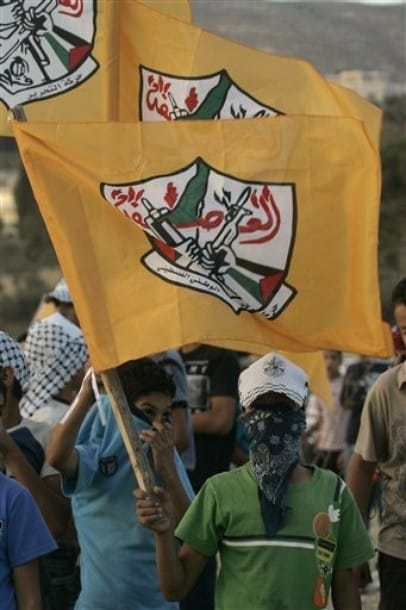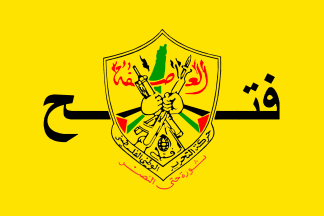Israeli officials have commented further on Mahmoud Ahmadinejad’s impending visit to Lebanon, including his tour of the border with Israel with complimentary rock-throwing.
Lebanon, not Israel, will be the party to suffer most from Iranian President Mahmoud Ahmadinejad’s scheduled visit next week to southern Lebanon, diplomatic officials said in Jerusalem on Monday.
“Lebanon is the primary victim, and if it wants to stop slipping into the jaws of the Iranian crocodile, it – and the moderate Arab world – should raise a strong voice and say this provocateur is not welcome,” Foreign Ministry spokesman Yossi Levy said.
Ahmadinejad is expected to visit battlegrounds of the Second Lebanon War in southern Lebanon, including Bint Jbail and Maroun a-Ras next Wednesday and Thursday, and reportedly wants to go to the border with Israel and throw rocks at IDF soldiers.
“Israel will not be harmed by the visit,” one Israeli diplomatic official said. “We are not afraid of his visit; he will be just another terrorist in southern Lebanon. It is Lebanon that needs to be concerned, allowing the Iranian Trojan horse into the country. It is their sovereignty that is being chipped away.”
The official added that “there have been greater intellectuals than Ahmadinejad who have thrown rocks at the border, and didn’t do much damage,” a reference to Edward Said, the late Columbia University professor who demonstratively threw rocks at Israeli soldiers from the border in 2000.
Sounds to me like we don’t plan on teaching the poisonous midget monkey a lesson.
Updates (Israel time; most recent at top)
11:08PM: Nobel-winning IVF pioneer Robert Edwards hates Israel.
Or not.
8:40PM: The YouTube channel of the indispensible MEMRI seems to have been suspended.
8:15PM: Al Jazeera sprung!
5:20PM: Meet the Methodist preacher taking on his own church for discriminating against Israel.
A Methodist preacher is preparing to sue his own church over claims it is using charitable donations to pursue a campaign of discrimination against Israeli Jews.
The legal dispute has been prompted by a controversial resolution passed at the Methodist Conference which called for a boycott of some Israeli goods.
If the legal action is successful, it would likely bring to an end all similar campaigns that boycott Israeli goods and services.
David Hallam, who preaches in Methodist churches around Birmingham, has accused his own church of wasting funds to pursue a vendetta against Israel. There are no Methodist churches in either Israel or the Occupied Territories.
Mr Hallam, 62, a former labour MEP, said: “What I object to is money which I am putting on the collection plate on a Sunday being used to fund a political campaign against the Jewish state. This is both discriminatory and a misuse of a charity’s funds.
“The Methodist Church seems to think it has a God given right to tell Jews how to run their affairs. It is very disturbing we are getting involved in a territory where we don’t have any members or churches.”
Mr Hallam has recruited Paul Diamond, a barrister with expertise in human rights law and religious law, to bring the case.
Mr Diamond will argue that the Methodist resolution passed in the summer is in breach of European human rights law and a wide-ranging European Union directive on racism.
By singling out Israel, rather than other countries with often worse human rights records, Mr Diamond will claim the church is being deliberately prejudiced against the Jewish state.
Last week the Methodist Church defended the resolution, pointing out the boycott was only of goods made in illegal Israeli settlements in the West Bank and Gaza.
The church said the stance was supported by Palestinian Christians and denied any suggestion the move was racist or discriminatory against Jews.
A Methodist spokesman said: “The report was debated and received by the annual Methodist Conference, which is the governing body of the Church and is democratic and representative of the whole Church, and which voted for each resolution.
The spokesman added;: “As Christians, we take from the parable of the Good Samaritan and the life of Jesus that we cannot turn our back on injustice just because it is not geographically near to us.”
The resolution so angered the Board of Deputies, the organisation that represents British Jewry, that it broke off all contact with the leadership of the Methodist Church.
The Board issued a statement at the time suggesting that the Methodist church should “hang its head in shame”.
3:32PM: And stay out.
2:40PM: In a letter to the Independent, musician Roger Waters has denied being antisemitic, despite using images of planes dropping bombs in the shape of Jewish Stars of David followed by dollar signs
Dear Sir
In a recent news item on Foxnews/online, subsequently abridged in The Evening Standard, Abraham Foxman, head of the ADL, (Anti Defamation League) in the USA , accuses my new production of The Wall and by implication me, of anti-Semitism.
A serious charge that demands a response. Had Mr Foxman come to my show before passing judgement and commenting publicly he might, I hope, have held his peace, as there is no anti Semitism in The Wall Show. The song to which he refers, Good Bye Blue Sky, describes how ordinary people, military and civilians alike, suffer trauma in the aftermath of war.
The visuals that accompany the song show waves of B52 bombers dropping various symbols from bomb bays on a war ravaged landscape. The symbols are: in no particular order, a Crucifix, a Hammer and Sickle, a Star of David, A Crescent and Star, a Mercedes sign , a Dollar sign, and a Shell Oil sign.
Mr Foxman’s concern was that potentially the juxtoposition of a Star of David and a Dollar sign might incite hatred of Jews. Contrary to Mr Foxman’s assertion, there are no hidden meanings in the order or juxtaposition of these symbols.
The point I am trying to make in the song is that the bombardment we are all subject to by conflicting religious, political, and economic ideologies only encourages us to turn against one another, and I mourn the concommitant loss of life.
In so far as The Wall has a political message it is to seek to illuminate our condition, and find new ways to encourage peace and understanding, particularly in the Middle East .
Incidentally, being from England, I had never heard of the ADL until today, but I have googled them and I see from their mission statement of 1913 that their brief is not only to defend the Jewish people from defamation, but also, and I quote, ” to secure justice and fair treatment to all citizens alike and to put an end forever to unjust and unfair discrimination against and ridicule of any sect or body of citizens”.
Perhaps we should all focus on that lofty ideal and stop cowering in our corners throwing stones at one another.
Roger Waters
Yes, I am sure having the dollar signs appear right after the Stars of David was just an unfortunate coinkidink, huh Roger?
9:58AM: Egyptian President Hosni Mubarak has said in an interview with the journal of the Egyptian Armed Forces that the failure of peace talks will result in widespread violence.
Which is funny, because it was widespread violence that led to the peace talks to begin with.
6:16AM: The Guardian has issued an apology of sorts for suggesting Israel is undermining the Al Aqsa mosque.
I say “of sorts” due to the snide last sentence.
Few places in the world are more difficult to report from than the Middle East. It is not just the physical danger that can face journalists. The unresolved religious and territorial conflicts that characterise the area are bitter, and have origins that reach through the centuries and spread out around the globe today. Passion, conviction and absolute belief confront the reporter on every side.
One of the problems at the heart of the region’s troubles is the Israeli/Palestinian conflict, and among the most contested issues of that conflict is the future of East Jerusalem. In its south-east corner lies the Old City and the Temple Mount (as Jews and Christians know it) or al-Haram al-Sharif (as Muslims know it). This platform of land is a holy site of great importance for the world’s Jews and Muslims.
The first and second temples built here by the Jews were destroyed by the Babylonians and the Romans respectively. On the site now are the al-Aqsa mosque and the Islamic shrine on the pinnacle, the Dome of the Rock. It is a constant source of tension for Israeli-Palestinian relations.
On 27 May this area was the setting for a feature the Guardian ran in G2, examining the lives of the Palestinian residents in Silwan, a community that lies along the southern flank of the Old City, and the effect on them and their homes of a series of archaeological digs that are being undertaken to look for the remains of Ir David, the City of David. The Israelis believe that it lies beneath the Wadi Helweh neighbourhood in Silwan.
The article reported on the actions of Elad, a Jewish group that has dug a number of tunnels in the area to look for the remains of the City of David. Its work is supported by the Israeli government and is in conflict with many of the residents, who say their houses are sinking into the earth because of the excavations.
The Palestinians fear that the tunnels – originating in Silwan – either go under the al-Aqsa mosque or are intended to, undermining the mosque’s foundations.
In the 2,500-word feature was a sentence that examined Elad’s intentions: “Elad set up a two-pronged strategy: to strengthen Israel‘s ‘connection to Jerusalem’ they started to dig – under Silwan and into the land under the al-Aqsa mosque – for the biblical City of David and to create the Ir David tourist site.”
We have received only one complaint about the feature, contending that the sentence above is inaccurate: that the tunnels don’t go under the mosque. Initially I felt that the sentence referred to the tunnels entering the land under the platform on which the mosque stands. The complainant objected to that interpretation and I agreed to look at it again.
As part of that review I consulted former Jerusalem correspondents, two non-profit organisations that work with both communities, Emek Shaveh and Ir Amim, and Professor Israel Finkelstein, a leading archaeologist from Tel Aviv University. All believe the diggings are near the Temple Mount, but not under it.
Daniel Seidemann is a founder of Ir Amim, the goal of which is a “more sustainable and equitable city”. Ir Amim produced a 47-page report last year – Shady Dealings in Silwan – looking at the issues in that part of Jerusalem. Seidemann said: “There is massive tunnelling under Silwan leading towards the Temple Mount, there is massive tunnelling under Palestinian housing adjacent to the Mount, but there is no indication that it is under the Temple Mount, although public scrutiny is difficult.”
Finkelstein said: “There is no excavation under the Temple Mount as far as I know. There are now five archaeological projects in the City of David: one is far from the Temple Mount at the southern tip of the City of David ridge; three are located about 250 metres or so away from the southern wall of the Temple platform. One is closer, about 75 metres or so, but has reached bedrock so there is no way to dig under the Temple Mount.”
I think there is ambiguity in the disputed sentence in the feature – the author agrees – and today a clarification has been published in the Corrections and clarification column. It took a long time – too long – to reach that conclusion, which I regret. And the decision will not settle any wider argument. Some may wonder why a few metres either way matters, or requires so much attention. Those who live in Silwan know why.
6:08AM: Photo of the day:

Those are Fatah flags these palestinian protesters are holding up. In case you cannot see them properly, here is a better view.

A map of all of Israel (not just the 1967 territories) under a couple of rifles.
Yes, it is the so-called settlers and their settlements that are the obstacle to peace.



